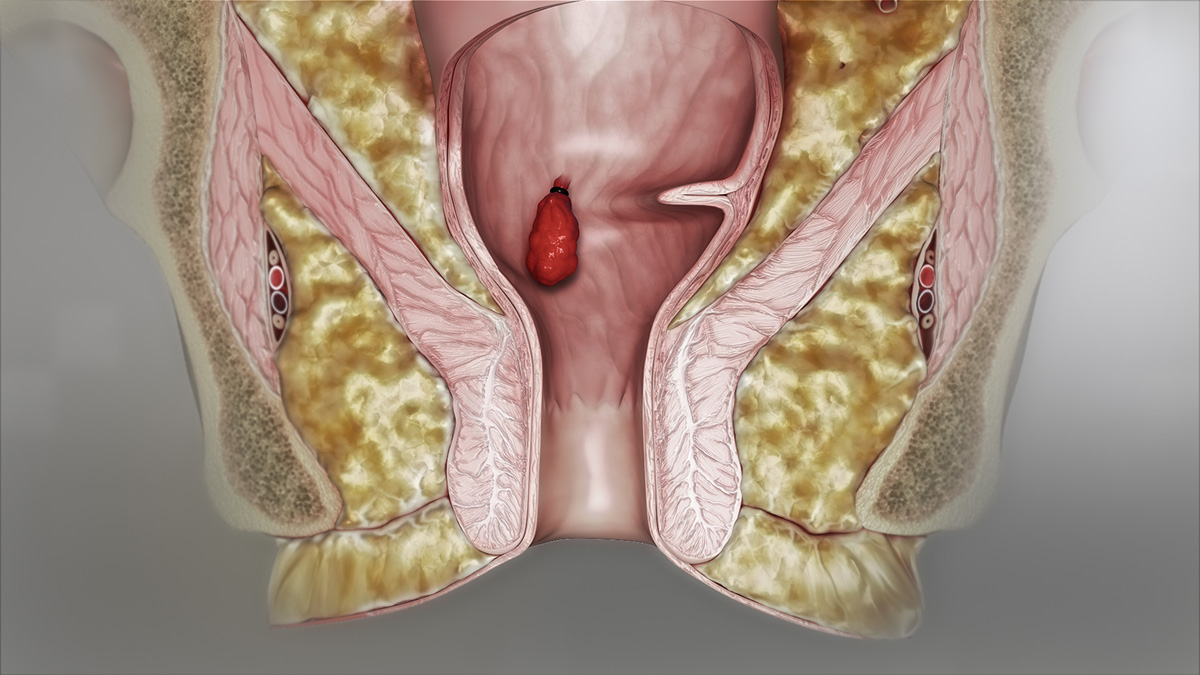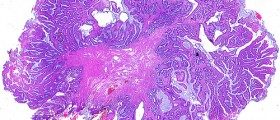
Hemorrhoids are swollen and enlarged, normally present blood vessels in anus and lower part of the rectum (the final intestine). They usually occur as a result of high pressure in blood vessels of this region. The most common cause of hemorrhoids is straining during defecation, pregnancy, genetic factors, aging, chronic constipation, diarrhea, improper diet (too spicy, salty or sour food), alcohol abuse, prolonged sitting and infections of the anus.
Hemorrhoids may be external or internal problem. Inner piles occur close to the beginning of the anal canal and the external appear on anus. Internal hemorrhoids originate from internal hemorrhoid venous plexus in the upper part of the anal canal and rectum. They increase, covering the lower part of the anal canal and making external hemorrhoid venous plexus visible. At the beginning and end of defecation can be painlessly light red bleeding, often in the form of spray. Blood is on the stool, but not mixed with it. Hemorrhoids often prolapse with defecation, which may become permanent.
Symptoms of internal hemorrhoids are stool covered with light red blood, blood on a toilet paper or a toilet. Internal hemorrhoids can fall out from the anus which can be painful. Symptoms of external hemorrhoids include pain around the anus. The entire area around the anus is a sensitive, painful and itchy.
Bleeding can be a symptom of other diseases of the gastrointestinal tract, so consultation with doctor is necessary to rule out serious diseases. For establishing diagnosis proctologist do rectal examination by anoscopy by which he finds swollen blood vessels. It is necessary that the doctor make digitorectal review (review of the last intestine by fingers) looking for abnormalities.
Piles are usually not dangerous and don’t endanger human life. Usually they are solved without surgery. Some of these methods are: the enrichment of food by ingredients that is rich in fiber, increased fluid intake, avoiding unnecessary and prolonged sitting on the toilet, maintaining strict hygiene of anal area which assumes washing anus with warm water after every discharge and use of various creams and suppository for overcoming piles.Operative treatment of hemorrhoids, which includes minimally invasive technique, is more applicable to internal hemorrhoids because the nerve endings of that area are not sensitive to pain.
Banding include raising the internal hemorrhoid, wrapping it around with small rubber band, then tightening and screwing, and on their origin remains a node that after several days drops off itself.
Infrared coagulation involves heating the internal hemorrhoid, while the blood clot and scar is formed.
Banding and infrared coagulation performs without anesthesia or with mild local anesthesia, because as already noted in this region of the rectum is possible to feel only the pressure, in rare cases, mild pain. Given that the use of these methods treat small areas, it is necessary to repeat this procedure several times.
Stapled Hemorrhoidectomy involves cutting the rectal tissue located above the internal hemorrhoid and stapling together which pulls up hemorrhoid and destroys its blood supply. This procedure is performed under spinal or total anesthesia.
Hemorrhoidectomy is the traditional procedure that involves cutting the skin covering the piles, whether they are internal or external, and its sewing in a straight line. Since this procedure causes a lot of discomfort and pain, surgeons undertake it only in cases where the benefits of surgery are greater than the negative consequences.
Painless operating procedure for external hemorrhoids, unfortunately, does not exist due to the high sensitivity of the skin that covers them.

















Your thoughts on this
Loading...